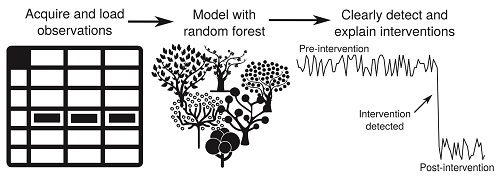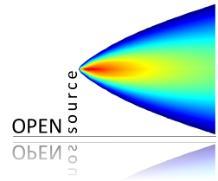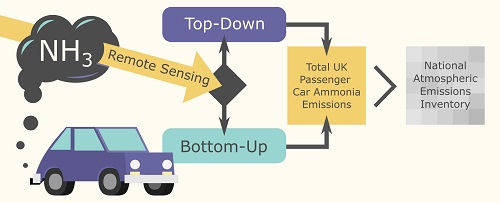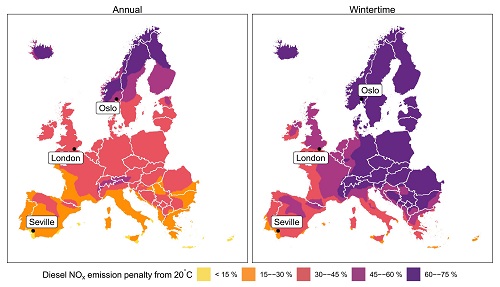Professor David Carslaw
Tel: 01904 321218
Email: david.carslaw@york.ac.uk
Urban air pollution
Our research is focussed on developing a better understanding of urban air pollution. This aim is achieved through the analysis of atmospheric composition and the measurement of emissions. Much of our work is made available through open-source software using the R programming language and widely adopted internationally. Many of the techniques we have developed provide new information on the emission source characteristics and the ability to effectively quantify the impacts of air quality interventions. For over 10 years we have exploited vehicle emission remote sensing as a technique to comprehensively quantify real-world emissions of a wide range of pollutants and generate many new and important insights.
Receptor modelling

We have a long-standing interest in the development and application of statistical techniques that provide information on the source characteristics of air pollutants and to detect and quantify the impact of interventions aimed at reducing the impact of air pollution. These techniques encompass a wide variety of approaches that have been developed over many years such as bivariate polar plots, clustering approaches and ‘meteorological normalization’. The latter approaches build on statistical learning techniques to account for or remove the effect of meteorology in time series data enabling a more robust quantification of emission changes. Our approaches have been adopted widely by the air quality community.
Selected publications
- Grange, S. K. and Carslaw, D. C. (2019) ‘Using meteorological normalisation to detect interventions in air quality time series’, Science of The Total Environment. 653, pp. 578–588. doi: 10.1016/j.scitotenv.2018.10.344.
- Grange, S. K., Lewis, A. C. and D. C. Carslaw. (2016). Source apportionment advances using polar plots of bivariate correlation and regression statistics. Atmospheric Environment. 145, 128-134.
- Uria-Tellaetxe, I. and D.C. Carslaw (2014). Source identification using a conditional bivariate Probability function. Environmental Modelling & Software, Vol. 59, 1-9.
- Carslaw, D.C. and K. Ropkins, (2012). openair — an R package for air quality data analysis. Environmental Modelling & Software. Volume 27-28, 52-61.
Openair project

Many of the receptor modelling approaches we have developed have been made available in open-source software called openair. The openair project started with 3-year funding from the Natural Environment Research Council (NERC). The principal aim is to make available innovative data analysis techniques for air pollution data – or more generally atmospheric composition data. openair is an R package that is openly and freely available to anyone. The package is used extensively around the world by a wider range of users including in academia, the private and public sectors.
Vehicle emissions
Our vehicle emissions research is focused on the use of remote sensing. Over the past few years, we have developed many new insights into the behaviour of vehicle emissions based on comprehensive measurements across the UK together with Ricardo Energy & the Environment. The main aim is to improve understanding of the real-world emissions performance of vehicles. We use two instruments: one from the University of Denver (where the technique was invented) and a commercial instrument developed by Opus Inc.

Some of the highlights include:
• The comprehensive quantification of road vehicle ammonia emissions using ‘top-down’ and ‘bottom-up’ methods to quantify UK total emissions, which showed the UK national inventory substantially under-estimates emissions; see Farren et al., 2020.
• Carslaw et al., (2011) showed that based on extensive remote sensing measurements that NOx emissions were not decreasing as expected from light duty diesel vehicles and this lack of decrease could also be observed in the atmosphere. Coupled with increases in primary NO2 emissions (Carslaw, 2005), these two effects combined to produce the European ‘NO2 problem’.
• We showed that there was a strong ambient temperature dependence in light duty diesel NOx emissions following extensive measurement campaigns throughout 2017 and 2018 (Grange et al., 2019). This finding may have important implications for emissions inventories of road vehicle NOx emissions and imply emissions may be overestimated in summer and underestimated in winter; see plot below:

- The first measurements of NO2in the UK were made in London (Carslaw and Rhys-Tyler, 2013). This work also showed the large differential performance of emissions control on vehicles and especially urban buses.
Selected publications
- Farren, N.J., Davison, J., Rose, R.A., Wagner, R.L. and D. C. Carslaw (2020). Underestimated ammonia emissions from road vehicles. Environmental Science & Technology, 54, 15689−15697, https://dx.doi.org/10.1021/acs.est.0c05839.
- Grange, S. K., Farren, N. J., Vaughan, A. R., Davison, J. and D. C. Carslaw (2020). Post-Dieselgate: evidence of NOx emission reductions using on-road remote sensing. Environmental Science & Technology Letters, 7, 382-387. https://doi.org/10.1021/acs.estlett.0c00188.
- Davison, J., Bernard, Y., Borken-Kleefeld, J., Farren, N. J. Hausberger, S., Sjodin, A., Tate, J. E., Vaughan, A. R., Carslaw, D. C. (2020). Calculation of Distance-Based Emission Factors from Vehicle Emission Remote Sensing Measurements. Science of the Total Environment. 739 (2020) 139688.
- Grange, S.K., Farren, N.J., Vaughan, A.R., Rose, R.A. and D.C. Carslaw (2019). Strong temperature dependence for light-duty diesel vehicle NOx Environmental Science & Technology. 53, 6587–6596. https://doi.org/10.1021/acs.est.9b01024.
- Carslaw, D.C., Beevers, S.D., Tate, J.E., Westmoreland, E. and M.L. Williams, 2011. Recent evidence concerning higher NOx emissions from passenger cars and light duty vehicles. Atmospheric Environment 45 (2011) 7053-7063.

